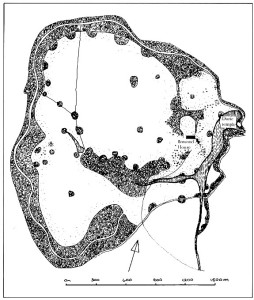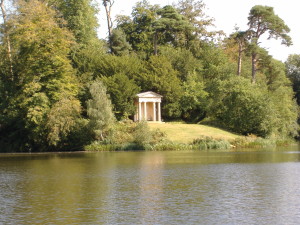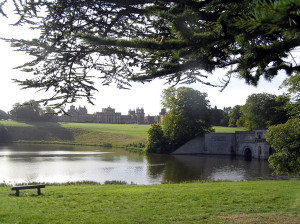With some pride I can claim I’m ahead of the curve here. Next year, 2016, is the 300th anniversary of the birth of the famous landscaper and designer Lancelot “Capability” Brown, who transformed the grounds of English stately home. Today, however, is the anniversary of his death in 1783. You can visit capabilitybrown.org for lots of information and plans for next year.
An anonymous obituary of Capability Brown reads: Such, however, was the effect of his genius that when he was the happiest man, he will be least remembered; so closely did he copy nature that his works will be mistaken.
And that’s pretty much true. We have come to associate his hallmark “Serpentine” style–gentle undulations of land, curving rivers and drives, circular clumps of mature trees–as what we expect to see when visiting an English historic house. Brown never saw his completed work, trusting to nature and time to finish the job.
He is thought to have worked on over 170 gardens in his 35-year career. He began his career as undergardener and then head gardener at Stowe, one of his most famous creations:
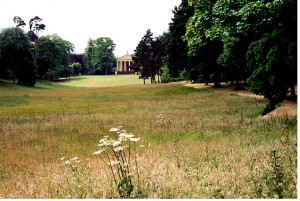 Here’s his plan for Bowood House, with the Grecian temple on the right (east) point and how it looks today:
Here’s his plan for Bowood House, with the Grecian temple on the right (east) point and how it looks today:
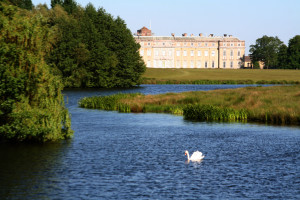 And talking of Capability Brown (his nickname came about from assuring his clients that their estates held great capabilities), let us not forget Terry Pratchett’s fictional Bergholt Stuttley “Bloody Stupid” Johnson from Discworld:
And talking of Capability Brown (his nickname came about from assuring his clients that their estates held great capabilities), let us not forget Terry Pratchett’s fictional Bergholt Stuttley “Bloody Stupid” Johnson from Discworld:
His efforts in landscape design are especially noteworthy, and the Ankh-Morpork palace gardens are considered to be his greatest accomplishment. It is here that we find such creations as the hoho, which is a fifty foot deep ha-ha, the gargantuan beehive currently used as a pigeon coop in the absence of ten foot long bees, a structure referred to only as the “Johnson Exploding Pagoda”, iron patio furniture that melted and crazy paving that committed suicide, and the chiming sundial that also tends to explode around noon. In the palace grounds is also a maze so small that people get lost looking for it. Another notable feature is the ornamental trout lake, built long, but, sadly, only one inch wide. It currently houses one trout that is quite content provided it doesn’t want to turn around. “Perfect for the dieting fish”. At one point there was also an ornate fountain which, upon being turned on, did nothing but groan ominously for several minutes before firing a small stone cherub a thousand feet into the air. Read more
I’m wondering if there are any books with landscape designer heroes or heroines. Enlighten me! Or tell me which historic homes you’ve visited, or would like to visit, in England.

